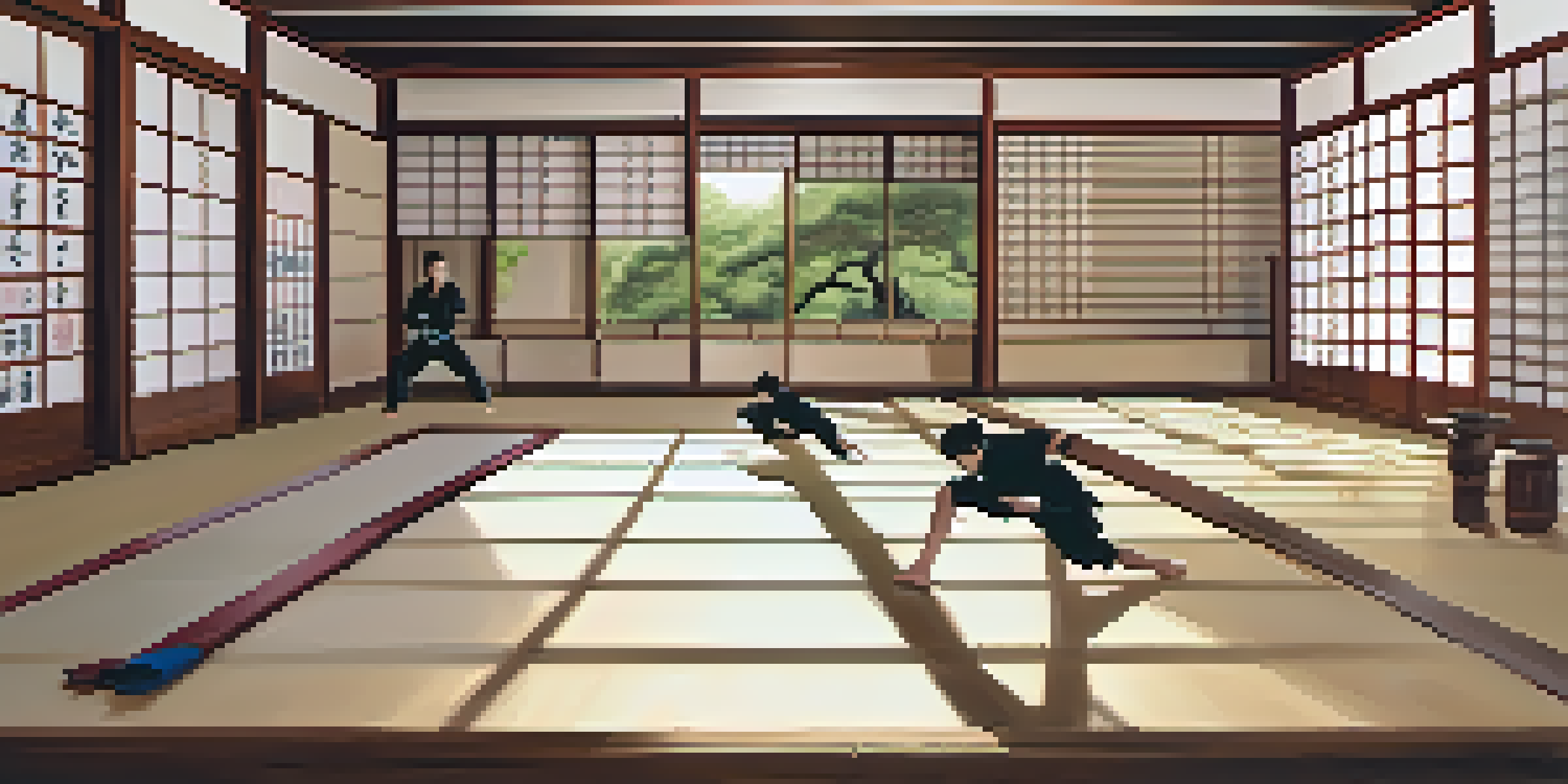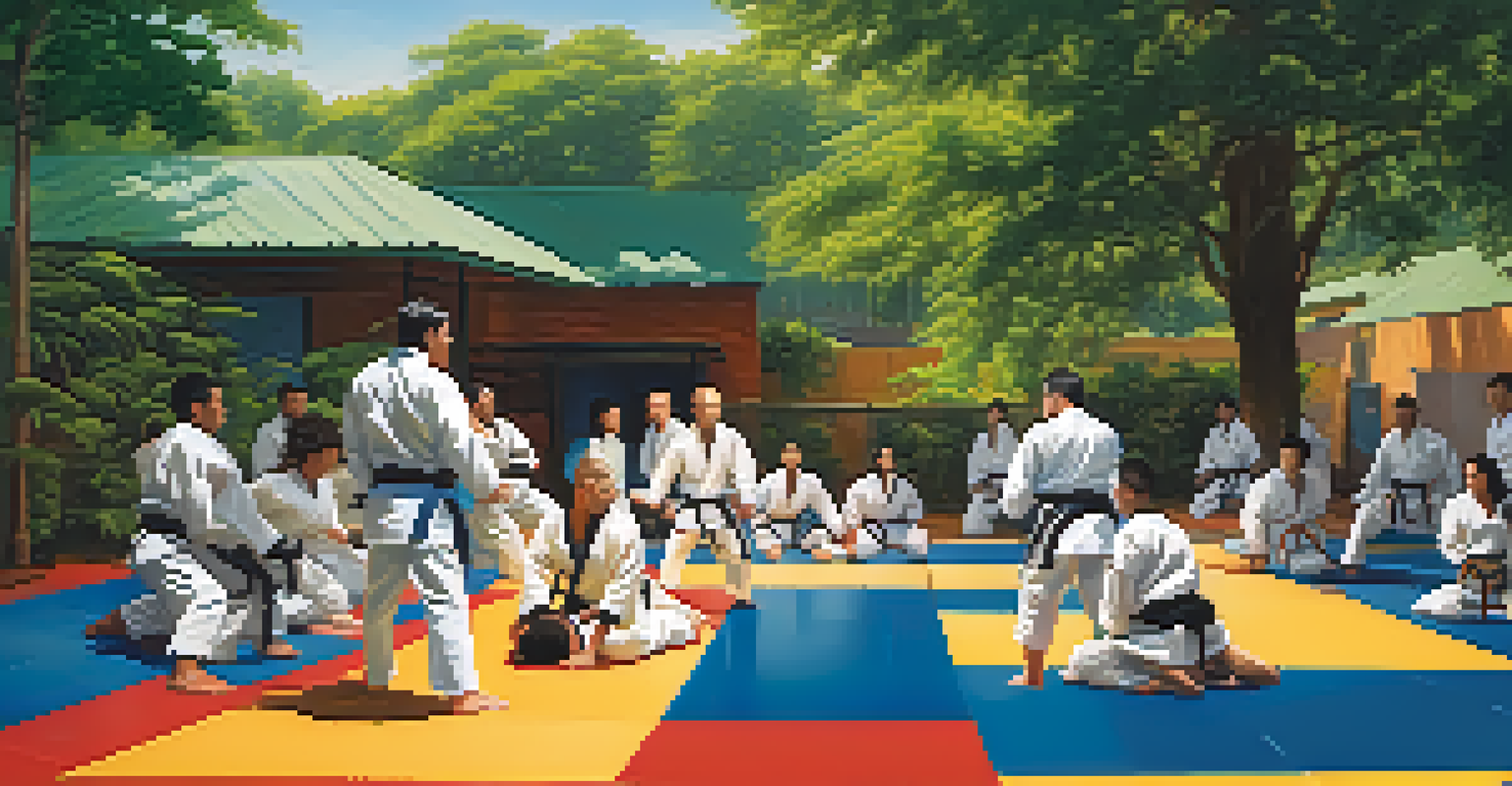Understanding Self Defense Techniques in Various Martial Arts

The Importance of Self Defense in Today's World
In a world where personal safety is a growing concern, understanding self-defense is crucial. It empowers individuals to protect themselves and boosts confidence. Whether you're walking home at night or navigating crowded spaces, knowing how to defend yourself can make a significant difference.
The best fighter is never angry.
Self-defense is not just about physical techniques; it's also about awareness and prevention. Many self-defense strategies focus on avoiding dangerous situations altogether. For instance, being mindful of your surroundings can often deter potential threats before they escalate.
Moreover, self-defense training can promote physical fitness and mental resilience. Engaging in martial arts teaches discipline and enhances decision-making skills, which are beneficial in many areas of life. Ultimately, self-defense is about equipping yourself with the tools to face challenges confidently.
An Overview of Popular Martial Arts Styles
Various martial arts styles offer unique self-defense techniques tailored to different situations. Styles like karate emphasize striking techniques, while jiu-jitsu focuses on grappling and submissions. Understanding these distinctions can help individuals choose the right style for their self-defense needs.

For example, Krav Maga, developed for the Israeli military, is designed for real-world situations and teaches quick, effective responses to threats. On the other hand, traditional judo emphasizes using an opponent's force against them, making it particularly effective for smaller individuals.
Self-Defense Empowers Individuals
Understanding self-defense not only enhances personal safety but also boosts confidence in various situations.
Each martial art has its philosophy and approach, which can resonate differently with practitioners. Whether you prefer the fluid movements of tai chi or the powerful strikes of Muay Thai, exploring various styles can lead to a well-rounded understanding of self-defense.
Karate: The Art of Striking and Blocking
Karate is one of the most recognized martial arts, known for its striking techniques. With a focus on punches, kicks, and blocks, it teaches practitioners how to create distance and control an encounter. The discipline involved in karate training also instills respect and self-control.
Self-defense is not just about physical techniques; it's also about awareness and prevention.
One of the key elements in karate is kata, a series of pre-arranged movements that simulate combat situations. Practicing kata not only enhances muscle memory but also prepares students for real-life scenarios by instilling reflexes and timing. It's a fundamental part of mastering the art.
Additionally, karate training often emphasizes situational awareness and conflict resolution. Students are taught to assess situations before engaging physically, promoting a mindset of avoidance whenever possible. This blend of physical and mental training makes karate a powerful tool for self-defense.
Brazilian Jiu-Jitsu: Grappling for Self Defense
Brazilian Jiu-Jitsu (BJJ) is a grappling-based martial art that focuses on ground fighting and submissions. This style emphasizes technique over brute strength, making it accessible for practitioners of all sizes. BJJ teaches how to control an opponent effectively, even from a disadvantaged position.
One of the most appealing aspects of BJJ is its emphasis on leverage and technique. For example, a smaller person can use specific joint locks and chokeholds to subdue a larger attacker. This concept of 'position before submission' is crucial, highlighting the importance of strategy in self-defense.
Martial Arts Offer Diverse Techniques
Different martial arts styles provide unique self-defense techniques, allowing individuals to choose what suits their needs best.
Moreover, BJJ training fosters mental toughness and problem-solving skills. Practitioners learn to stay calm under pressure and think critically during sparring sessions. This mental fortitude can be just as important as physical skills in a real-world confrontation.
Krav Maga: Practical Self Defense Techniques
Krav Maga is renowned for its focus on real-world self-defense scenarios. Developed for the military, it incorporates techniques from various martial arts, making it highly adaptable. The training emphasizes instinctive movements and practical responses to threats, often using everyday objects as improvised weapons.
A unique aspect of Krav Maga is its focus on defending against armed attackers and multiple assailants. Students learn to react quickly and effectively, often practicing techniques that can be applied in high-stress situations. This makes Krav Maga a popular choice for those seeking effective self-defense training.
Additionally, Krav Maga places a strong emphasis on awareness and de-escalation tactics. Practitioners are taught to recognize potential threats and avoid confrontations when possible. This holistic approach makes Krav Maga not just about physical techniques, but also about personal safety and risk management.
Judo: Leveraging Balance and Technique
Judo is a martial art that focuses on throws, pins, and submissions, making it a strategic choice for self-defense. It teaches practitioners how to use balance and timing to overcome opponents, often turning their strength against them. This makes it particularly effective for smaller individuals facing larger attackers.
In judo, the principle of 'maximum efficiency with minimum effort' is central. Practitioners learn how to execute throws and holds that capitalize on an opponent's momentum. This understanding of physics and body mechanics is invaluable in real-life self-defense situations.
Mental and Physical Benefits
Training in martial arts promotes both physical fitness and mental resilience, equipping practitioners with valuable life skills.
Moreover, judo training enhances physical fitness and mental discipline. The practice requires sharp reflexes and quick decision-making, skills that are transferable beyond the dojo. This combination of physical and mental training equips practitioners to handle various challenges, both on and off the mat.
Taekwondo: Fast Kicks and Self Defense Techniques
Taekwondo is known for its dynamic kicking techniques and fast-paced movements. This martial art emphasizes high, fast kicks that can be effective in self-defense situations. Practitioners learn to strike quickly and create distance, which can deter potential attackers.
In addition to kicking, taekwondo incorporates hand techniques and forms known as poomsae. These forms teach students the application of techniques in a structured manner, enhancing their overall skill set. The discipline required in taekwondo training also fosters a strong sense of respect and focus.

Furthermore, taekwondo promotes physical fitness, flexibility, and coordination. Regular training can significantly improve stamina and agility, which are crucial in self-defense scenarios. The combination of these elements makes taekwondo a popular choice for those looking to enhance their self-defense abilities.